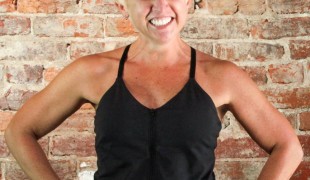- 8208
- 360
- 6
- 2
- 0
- Help Ukraine
About the solution
"When my cousin got breast cancer, she was telling me about how difficult the diagnostic process was. I researched and found out about fine needle aspirates, which are the least invasive, quickest and cheapest [diagnostic] procedures that a woman can have. Right now, they’re wildly inconclusive, so a lot of doctors refuse to use them. Only about five hospitals in the United States still use the procedure. I was really interested in trying to revive them, and when I found out that the major problem was how difficult the patterns were for pathologists to diagnose, I wanted to create a tool to aid the doctors", said Brittany
As early as the seventh grade, Wenger was experimenting with advanced computer science and artificial intelligence programs. From those early experiments, Wenger has gone on to write computer programs that improve the accuracy of tests for breast cancer and leukemia, below, she explains how they work:
"Based on cell morphology, which is how the cells look, the program will look for patterns and try to determine whether a person has cancer or not. For example, multi-layered cells are an indicator that a person may have cancer. It’s a little more complicated than that, though, because masses will exhibit both characteristics of non-cancerous masses and cancerous masses, even though clearly one mass can only be cancer or not cancer. (...) The detector is meant to be an initial screening mechanism—it’s trying to go through and determine whether the cells are cancerous or not. If it returns a diagnosis that the cells are cancerous, further testing would be required to determine the specific type", the inventor described.
Adapted from: http://bit.ly/1jRVrEY
More info: https://cloud4cancer.appspot.com/
https://www.youtube.com/watch?v=FiUmjmOKlto
This solution shall not include mention to the use of drugs, chemicals or biologicals (including food); invasive devices; offensive, commercial or inherently dangerous content. This solution was not medically validated. Proceed with caution! If you have any doubts, please consult with a health professional.
DISCLAIMER: This story was written by someone who is not the author of the solution, therefore please be advised that, although it was written with the utmost respect for the innovation and the innovator, there can be some incorrect statements. If you find any errors please contact the patient Innovation team via info@patient-innovation.com
-
-
135
-
0
-
1962

Diabmate
CAREGIVING
(SELF)-CARE: EATING: Eating independently.
(SELF)-CARE: DRINKING: Drinking independently.
COMMUNICATION: Communicating, whether by speaking, listening, or other means
diabetes type 1
diabetes type 2
Gestational Diabetes
App (Including when connected with wearable)
AI algorithm
Muscle weakness
Excessive thirst or hunger
Fatigue
Enhancing health literacy
Promoting self-management
Managing diabetes
Manage Medication
Preserving Organ Function
Building Supportive Community Relationships
To improve Treatment/Therapy
Preventing (Vaccination, Protection, Falls, Research/Mapping)
Raise awareness
Caregiving Support
Endocrinology
General and Family Medicine
Gynecology and Obstetrics
Internal Medicine
Pediatrics
France
-
-
-
69
-
0
-
756

Hillary creates Curio to help care coordination, enhance provider communication, and deliver personalized resources to cancer patients.
CAREGIVING
Cancer
Website
AI algorithm
Enhancing health literacy
Promoting self-management
Manage Medication
Preserving Organ Function
To implement a diagnostic tool
To improve Treatment/Therapy
Preventing (Vaccination, Protection, Falls, Research/Mapping)
Raise awareness
Caregiving Support
Medical Oncology
United States
-
-
-
428
-
0
-
7745

Pauir Athletic Top - Mudar a vida das mulheres com cancro de mama
CAREGIVING
Breast Cancer
Body-Worn solutions (Clothing, accessories, shoes, sensors...)
Enhancing health literacy
Promoting self-management
Preserving Organ Function
Restoring Skin Health
Alleviating Allergies
Restoring Blood Circulation
To improve Treatment/Therapy
Preventing (Vaccination, Protection, Falls, Research/Mapping)
Raise awareness
Caregiving Support
Dermatology
General and Family Medicine
Medical Oncology
United States
-
 en
en